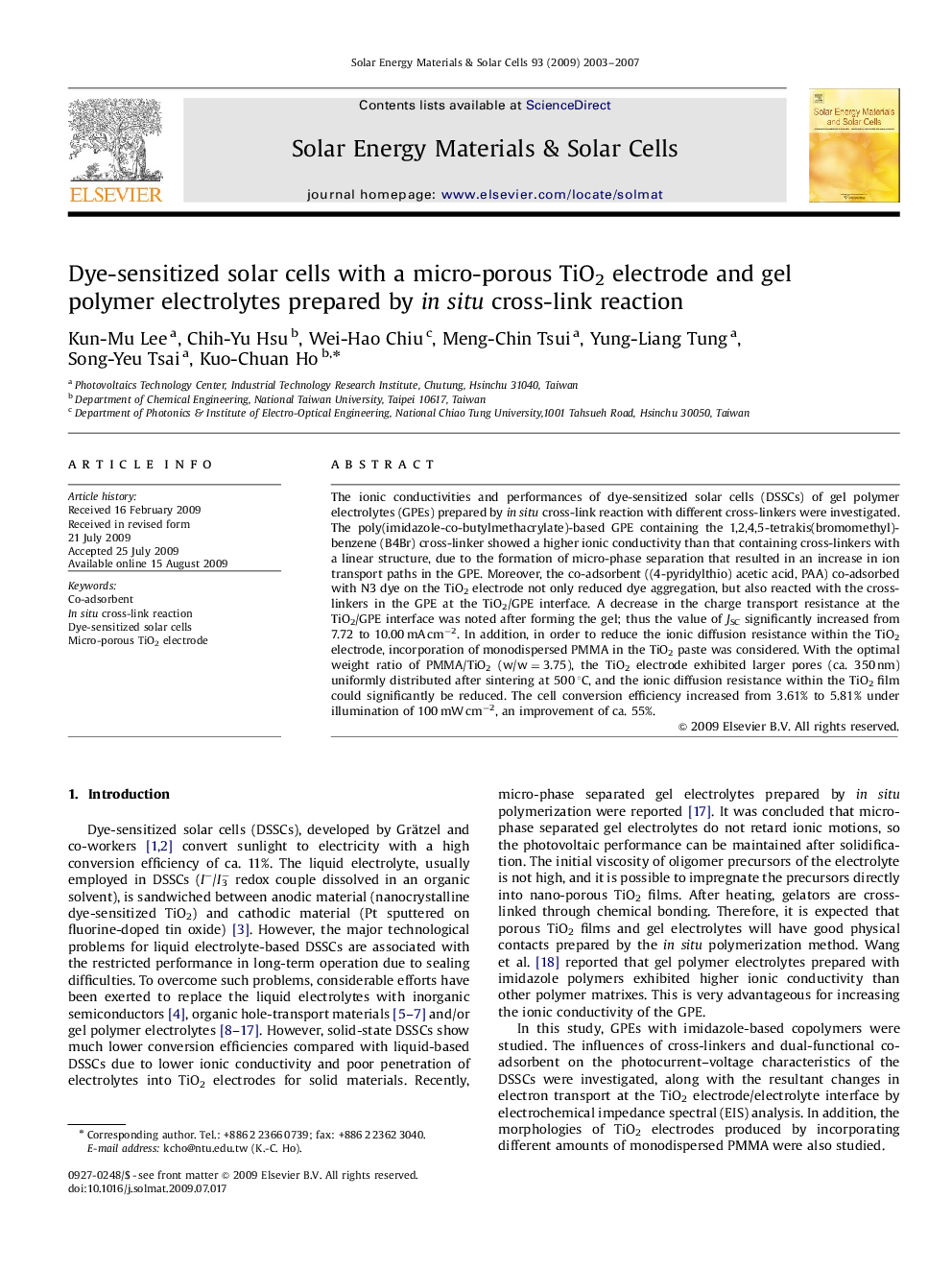| Article ID | Journal | Published Year | Pages | File Type |
|---|---|---|---|---|
| 79709 | Solar Energy Materials and Solar Cells | 2007 | 5 Pages |
The ionic conductivities and performances of dye-sensitized solar cells (DSSCs) of gel polymer electrolytes (GPEs) prepared by in situ cross-link reaction with different cross-linkers were investigated. The poly(imidazole-co-butylmethacrylate)-based GPE containing the 1,2,4,5-tetrakis(bromomethyl)benzene (B4Br) cross-linker showed a higher ionic conductivity than that containing cross-linkers with a linear structure, due to the formation of micro-phase separation that resulted in an increase in ion transport paths in the GPE. Moreover, the co-adsorbent ((4-pyridylthio) acetic acid, PAA) co-adsorbed with N3 dye on the TiO2 electrode not only reduced dye aggregation, but also reacted with the cross-linkers in the GPE at the TiO2/GPE interface. A decrease in the charge transport resistance at the TiO2/GPE interface was noted after forming the gel; thus the value of JSC significantly increased from 7.72 to 10.00 mA cm−2. In addition, in order to reduce the ionic diffusion resistance within the TiO2 electrode, incorporation of monodispersed PMMA in the TiO2 paste was considered. With the optimal weight ratio of PMMA/TiO2 (w/w=3.75), the TiO2 electrode exhibited larger pores (ca. 350 nm) uniformly distributed after sintering at 500 °C, and the ionic diffusion resistance within the TiO2 film could significantly be reduced. The cell conversion efficiency increased from 3.61% to 5.81% under illumination of 100 mW cm−2, an improvement of ca. 55%.
